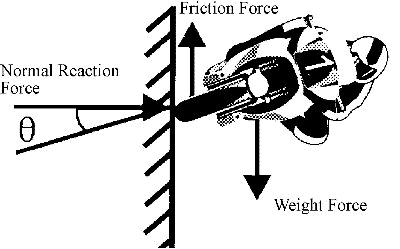Since the body is moving in a circular path, I understand that the normal reaction from the wall provides the required centripetal force. I also get that the driver has to lean in order to counteract the rotating forces caused because the forces of gravity, friction and normal are in different planes. What I don't get is the action of friction. I read that when the driver goes faster, the upward friction force increases, counteracting gravity. How does that happen? In my understanding, when the driver goes faster, the required centripetal force increases.
My questions:
When the driver goes faster, does the normal reaction from the wall increase to provide the extra centripetal force? If he goes slower, does it decrease?
If yes,
a. How?
b. Is that increase in normal reaction responsible for increasing friction?
c. Does the normal reaction keep increasing when velocity increases? Meaning, if the person keeps accelerating, will the normal reaction keep increasing to provide the centripetal force?
d. If the person goes too slow, does he fall because normal reaction is too weak to provide enough friction?
If no, how exactly does it work?


